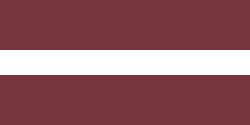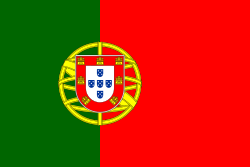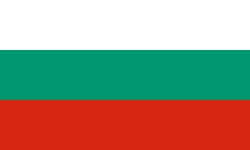Kommissionen von der Leyen II
| Kommissionen von der Leyen II Europeiska kommissionen | |
| nuvarande | |
© European Union, 2024, CC BY 4.0 | |
| Tillträde | 1 december 2024 |
| Sammansättning | |
| Kommissionsordförande | Ursula von der Leyen |
| Antal kommissionsledamöter | 27 |
| Parlamentariskt stöd i Europaparlamentet | |
 För (370) Emot (282) Avstod (68) | |
| Parlamentariskt stöd vid tillträdandet | EPP-gruppen S&D-gruppen ECR-gruppen Renew-gruppen G/EFA-gruppen |
| Opposition | PfE-gruppen ESN-gruppen Vänstergruppen |
| Historik | |
| Val | 2024 |
| Mandatperiod(er) | 2024–2029 |
| Företrädare | Kommissionen von der Leyen I |
Kommissionen von der Leyen II är den nuvarande europeiska kommission som leds av Ursula von der Leyen (EPP) sedan den 1 december 2024. Ursula von der Leyen föreslogs av Europeiska rådet som kommissionsordförande för en andra mandatperiod den 27 juni 2024 och valdes den 18 juli 2024 av Europaparlamentet med en absolut majoritet bestående av 401 röster för. Den 27 november 2024 godkändes den nya kommissionen i sin helhet av Europaparlamentet med 370 röster för och 282 röster emot.[1][2]
Den nya kommissionen utsågs av Europeiska rådet den 28 november 2024 och tillträdde den 1 december 2024.[3]
Politiska riktlinjer
Den 18 juli 2024 presenterade Ursula von der Leyen sina politiska riktlinjer som föreslagen kommissionsordförande. Riktlinjerna fokuserade på ökad tillväxt och konkurrenskraft, ett fördjupat försvarssamarbete och mer social rättvisa.[4]
Utnämning
Parlamentariskt stöd
För att kunna tillträda var Ursula von der Leyen tvungen att först godkännas av Europaparlamentet med en absolut majoritet. Eftersom de tre största pro-europeiska grupperna – EPP-gruppen, S&D-gruppen och Renew-gruppen – totalt sett minskade i valet 2024 var det oklart inför omröstningen om hon skulle erhålla en majoritet. Detta eftersom omröstningen om von der Leyen skulle vara sluten och vissa av de cirka 400 ledamöter tillhörandes de tre grupperna inte väntades rösta för eller närvara.[5] Avgörandet skulle därför fällas av antingen den konservativa ECR-gruppen eller den gröna G/EFA-gruppen.
Inför omröstningen i Europaparlamentet presenterade von der Leyen sina politiska riktlinjer och höll ett tal inför parlamentet där hon betonade de viktigaste delarna av sitt politiska program.[6] Talet följdes av en debatt i kammaren mellan partigrupperna. Den gröna G/EFA-gruppen meddelade då sitt stöd till von der Leyen för en andra mandatperiod, medan ECR-gruppen förblev splittrad.[7]
I den slutna omröstningen som följde efter debatten röstade 401 ledamöter av 707 röstande för von der Leyen. Hon uppnådde därmed kravet om minst 360 röster.[8].[9][10]
Utnämning av den höga representanten
Efter Europeiska rådets sammanträde i juni 2024 stod det klart att Kaja Kallas skulle utses till ny hög representant för utrikes frågor och säkerhetspolitik tillsammans med Ursula von der Leyen som föreslagen kommissionsordförande. Efter att von der Leyen hade blivit vald av Europaparlamentet den 16 juli 2024 samtyckte hon till utnämningen av Kallas som ny hög representant, ett krav för att Kallas skulle kunna utses till posten. Europeiska rådet utnämnde Kallas till ny hög representant med start från och med den nya kommissionens tillträde genom ett beslut den 24 juli 2024.[11]
Kommissionsledamöter
|
I enlighet med EU:s grundfördrag nominerar varje medlemsstat en eller flera personer till kommissionsledamöter. Därefter utarbetar Europeiska unionens råd, i samförstånd med den valda kommissionsordföranden, en förteckning över de nominerade kommissionsledamöterna, en från varje medlemsstat. Denna förteckning antogs den 19 september 2024.[12] Varje föreslagen kommissionsledamot utfrågas därefter i Europaparlamentet innan parlamentet röstar om förslaget till ny kommission i sin helhet. Först därefter kan Europeiska rådet formellt utse den nya kommissionen.
Den 25 juni 2024 nominerade den irländska regeringen Michael McGrath till ny kommissionsledamot.[13] Den 4 juli 2024 nominerade den finländska regeringen Henna Virkkunen till ny kommissionsledamot.[14] Den 8 juli 2024 tillkännagav den svenska regeringen att Jessika Roswall (M) föreslås till ny kommissionsledamot från Sverige.[15][16]
I juni 2024 uttalade Frankrikes president Emmanuel Macron sitt stöd för en andra mandatperiod för den nuvarande kommissionsledamoten Thierry Breton,[17] och han nominerades i slutet av juli 2024.[18] I mitten av september 2024 framkom dock att von der Leyen hade bett Macron om en ny nominering. Till följd av detta avgick Breton med omedelbar verkan från kommissionen.[19][20] Istället nominerades Stéphane Séjourné.[21][22]
von der Leyen uppmanade alla medlemsstater att nominera två kandidater, en man och en kvinna, såvida inte en redan sittande kommissionsledamot gavs förnyat förtroende. I slutet av augusti 2024 hade dock endast den bulgariska regeringen tillmötesgått detta krav och nominerat två kandidater.[23]
|
Se även
Referenser
| |||||||||||||||||
| EU-portalen – temasidan för Europeiska unionen på svenskspråkiga Wikipedia. |
Media som används på denna webbplats
The Flag of Europe is the flag and emblem of the European Union (EU) and Council of Europe (CoE). It consists of a circle of 12 golden (yellow) stars on a blue background. It was created in 1955 by the CoE and adopted by the EU, then the European Communities, in the 1980s.
The CoE and EU are distinct in membership and nature. The CoE is a 47-member international organisation dealing with human rights and rule of law, while the EU is a quasi-federal union of 27 states focused on economic integration and political cooperation. Today, the flag is mostly associated with the latter.
It was the intention of the CoE that the flag should come to represent Europe as a whole, and since its adoption the membership of the CoE covers nearly the entire continent. This is why the EU adopted the same flag. The flag has been used to represent Europe in sporting events and as a pro-democracy banner outside the Union.Det är enkelt att lägga till en ram runt den här bilden
The flag of Slovenia.
- "The construction sheet for the coat of arms and flag of the Republic of Slovenia
- is issued in the Official Gazette Uradni list Republike Slovenije #67, 27 October 1994
- as the addendum to the Law on the coat of arms and flag."
Flag of Portugal, created by Columbano Bordalo Pinheiro (1857–1929), officially adopted by Portuguese government in June 30th 1911 (in use since about November 1910). Color shades matching the RGB values officially reccomended here. (PMS values should be used for direct ink or textile; CMYK for 4-color offset printing on paper; this is an image for screen display, RGB should be used.)
The civil ensign and flag of Belgium. It is identical to Image:Flag of Belgium.svg except that it has a 2:3 ratio, instead of 13:15.
Election of the European Commission by the European Parliament on the 27 November 2024:
© European Union, 2025, CC BY 4.0
Official portrait of Costas Kadis, European Commissioner
© European Union, 2025, CC BY 4.0
Official portrait of Dubravka Šuica, European Commissioner
© European Union, 2025, CC BY 4.0
Official portrait of Stéphane Séjourné, European Commissioner
© European Union, 2025, CC BY 4.0
Official portrait of Magnus Brunner, European Commissioner
© European Union, 2025, CC BY 4.0
Official portrait of Dan Jørgensen, European Commissioner
Författare/Upphovsman: European Parliament from EU, Licens: CC BY 2.0
In a debate with MEPs, Ursula von der Leyen outlined her vision as Commission President. MEPs will vote on her nomination, held by secret paper ballot, at 18.00.
Read more: www.europarl.europa.eu/news/en/press-room/20190711IPR5682...
This photo is free to use under Creative Commons license CC-BY-4.0 and must be credited: "CC-BY-4.0: © European Union 2019 – Source: EP". (creativecommons.org/licenses/by/4.0/) No model release form if applicable. For bigger HR files please contact: webcom-flickr(AT)europarl.europa.eu© European Union, 2025, CC BY 4.0
Official portrait of Jozef Síkela, European Commissioner
© European Union, 2025, CC BY 4.0
Official portrait of Ekaterina Zaharieva, European Commissioner
© European Union, 2025, CC BY 4.0
Official portrait of Wopke Hoekstra, European Commissioner
© European Union, 2025, CC BY 4.0
Official portrait of Apostolos Tzitzikóstas, European Commissioner
© European Union, 2025, CC BY 4.0
Official portrait of Henna Virkkunen, European Commissioner
© European Union, 2025, CC BY 4.0
Portrait of Hadja Lahbib, European Commissioner-designate for Preparedness and Crisis Management, and European Commissioner-designate for Equality.
© European Union, 2025, CC BY 4.0
Official portrait of Raffele Fitto, European Commissioner
© European Union, 2025, CC BY 4.0
Official portrait of Michael McGrath, European Commissioner
© European Union, 2025, CC BY 4.0
Official portrait of Jessika Roswall, European Commissioner
© European Union, 2024, CC BY 4.0
On 27 November 2024, the first group picture of the new von der Leyen Commission was taken at the European Parliament in Strasbourg. The new Commission will take office on 1st December 2024.
© European Union, 2025, CC BY 4.0
Official portrait of Valdis Dombrovskis, European Commissioner
© European Union, 2025, CC BY 4.0
Official portrait of Glenn Micallef, European Commissioner
© European Union, 2025, CC BY 4.0
Official portrait of Olivér Várhelyi, European Commissioner
© European Union, 2025, CC BY 4.0
Official portrait of Maroš Šefčovič, European Commissioner
© European Union, 2025, CC BY 4.0
Official portrait of Marta Kos, European Commissioner
© European Union, 2025, CC BY 4.0
Official portrait of Piotr Serafin, European Commissioner
© European Union, 2025, CC BY 4.0
Official portrait of Maria Luís Albuquerque, European Commissioner
© European Union, 2025, CC BY 4.0
Portrait of Kaja Kallas, High Representative of the Union for Foreign Affairs and Security Policy and Vice-President of the European Commission.
© European Union, 2025, CC BY 4.0
Official portrait of Roxana Mînzatu, European Commissioner
© European Union, 2025, CC BY 4.0
Official portrait of Teresa Ribera, European Commissioner
© European Union, 2025, CC BY 4.0
Official portrait of Christophe Hansen, European Commissioner
© European Union, 2025, CC BY 4.0
Official portrait of Andrius Kubilius, European Commissioner

























































